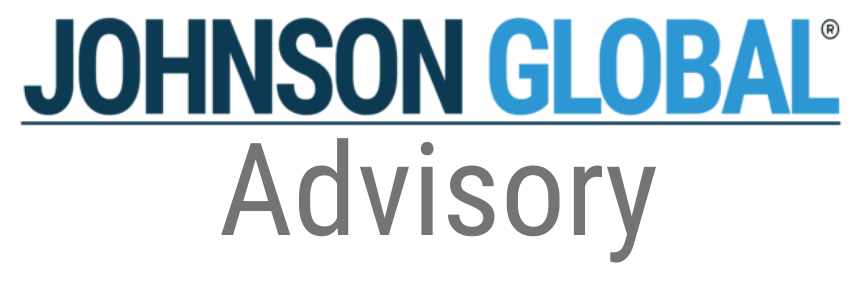Broker-Dealer Update: Two Years Later and Still Struggling
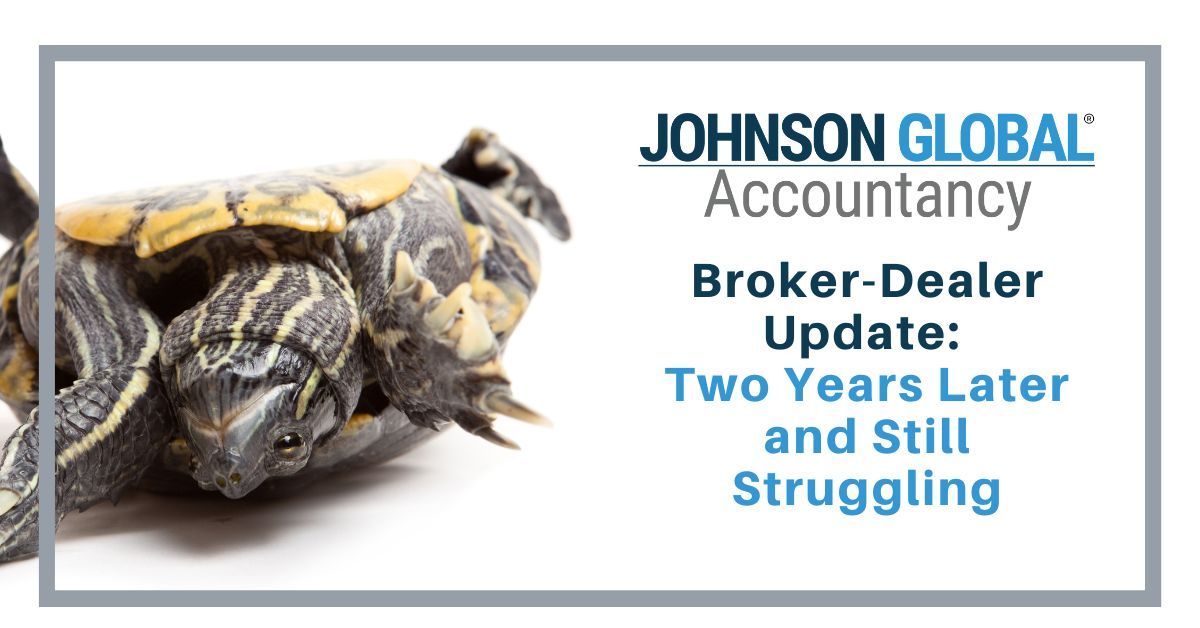
In September of 2020, we published an article summarizing the state of the broker-dealer inspection program, noting that at the time, it had been nine years and still running as an interim program. Now, in August of 2022, the PCAOB released its Annual Report on the Interim Inspection Program Related to Audits of Brokers and Dealers (“2022 Report”) and sure enough, not much progress has been made, both with regards to audit quality or with regards to establishing a permanent program.
As a refresher, the interim program was established in response to the 2010 Dodd-Frank Act. The Board originally anticipated “being in a position to propose rules for a permanent program by 2013.”1 Now, in 2022, the PCAOB, having been governed by three different boards, has yet to propose rules for a permanent program and broker-dealer audits continue to lag in audit quality, as compared to issuer audits.
SUMMARY OF FINDINGS
Taking a glance at the most recent annual report on the broker dealer inspections program, 78% of firms inspected had at least one audit deficiency, as compared to 89% of firms inspected and disclosed in the 2019 report. Of the audits inspected, 49% had at least one deficiency, compared with 71% of audits inspected and disclosed in the 2019 report. The industry has also continued to consolidate with only 345 audit firms registered, as compared to 411 in 2019.
The PCAOB explicitly states: “While inspection results over that period indicate that the quality of broker-dealer audit and attestation engagements has improved, the overall deficiency rates remain unacceptably high.” Unacceptably – wow! That’s a strong word that carries with it a lot of judgment, especially coming from the objective regulator.
We noted that the majority of findings are in the following areas:
- Financial statement audits: Auditing revenue continues to be a challenge for all firms under both programs. In addition, firms struggled to audit related party relationships and transactions (often stemming from expense sharing agreements), going concern, expenses and related accruals (again, typically linked to expense sharing agreements), fair value measurements (which is true across the entire audit industry), and receivables and payables.
- Examination engagements (including internal controls over compliance (ICOC)): Engagement teams continue to struggle to sufficiently test the operating effectiveness of controls, including controls over information technology. In addition, engagement teams often fail to test the completeness and accuracy of information used in compliance tests/controls.
- Review engagements: Through inspection procedures, the PCAOB continues to identify contradictory evidence that is not sufficiently addressed/considered by the engagement teams. In addition, firms continue to fail to perform all of the requirements under Attestation Standard No. 2. This includes performing inquiries about controls over compliance, among other requirements.
JGA’S' ANALYSIS
Role of the auditor
While the PCAOB’s findings are valid, it does raise the question of the role of the auditor. Is the audit another compliance test or is it truly an audit of the financial statements, which is inherently predicated on risk assessment? For instance, the PCAOB indicated numerous findings around related party relationships and transactions, specifically around expense sharing agreements. Many broker-dealers are small legal entities that are subsidiaries of larger organizations (often banks or asset management companies). To the extent the broker-dealer is entirely owned either by private investors or by a larger private company, what is the real risk with intercompany expense allocations? We’re not saying that the engagement team shouldn’t perform some procedures to test the related party disclosures, but to what extent? Does the audit team need to test the completeness and accuracy of the source documents coming from the parent company? That could potentially expand the audit to an audit of the parent company’s expenses; that’s not typically built into the audit budget and fees.
When auditing financial statement accounts, engagement teams need to be sure to respond to the risk of material misstatement for each relevant account; this includes documenting all procedures performed and documenting the considerations and judgments made when determining the appropriate audit approach. The extent of procedures should depend on risk.
Tests for compliance objectives do not have the same materiality concept as tests for audit assurance. It seems as if the PCAOB has taken the compliance mindset and applied it to audit, without acknowledging that audit procedures should be commensurate with the risk. That said, engagement teams need to improve their documentation of the audit risks. Absent evidence of the evaluation and documentation of its judgements, the engagement team cannot demonstrate how or why its audit procedures align with the risk assessment.
Inconsistency of PCAOB expectations
We have identified certain differences between the apparent expectations of the PCAOB’s BD inspectors, compared to other PCAOB inspectors, SEC examiners, and the PCAOB’s own guidance. We highlight some of these discrepancies below.
Differences between broker-dealer and issuer inspection programs
We have supported firms and their engagement teams on issuer inspections as well as broker-dealer inspections. We can say that there appear to be differences in the rigor and granularity of the procedures performed by the two programs. This isn’t surprising since so much of an audit comes down to professional judgment and therefore the inspection of an audit will also necessarily incorporate differences in judgment. That said, it seems the broker-dealer inspection program holds the audit quality bar to a different level than the issuer program. This disparity is true even within each program; we have seen PCAOB inspection teams challenge immaterial aspects of a management review control over “cash reconciliations,” which have almost no management judgement or subjectivity, and other inspection teams that have glossed right over a very complex, detailed management review control over investment valuations.
After 11 years, one would expect the audit quality in both broker-dealer and issuer audits to “normalize.” That hasn’t happened: deficiencies in broker-dealer audits continue to be significantly higher than in issuer audits. While there could be any number of causes, some of which we already explored in our previous article, it still begs the question, do the inspection programs have different expectations, thus accounting for some of the divergence in results?
Differences between the PCAOB and SEC
An example of differences between the two regulator’s expectations stems from the reliability of broker statements used by broker-dealers to support revenue. Non-clearing (or “introducing”) broker-dealers often rely entirely on clearing-broker statements to support trade transactions that form the basis of the majority of operations and revenue of an introducing broker-dealer. The SEC has clearly indicated that is okay if introducing brokers rely on the information provided by clearing brokers. 17 CFR § 240.17a-3(c) states, “A member of a national securities exchange, or a broker or dealer registered pursuant to section 15 of the Act (15 U.S.C. 78o), that introduces accounts on a fully-disclosed basis, is not required to make or keep such records of transactions cleared for such member, broker or dealer as are made and kept by a clearing broker or dealer pursuant to the requirements of this section and § 240.17a-4.”Further, the clearing broker-dealers are very heavily regulated and scrutinized by the SEC and FINRA (more so than introducing broker-dealers).
On the other hand, PCAOB guidance(AS 1105) indicates that the sufficiency of audit evidence depends largely on the risk of material misstatement and the quality of the audit evidence. Quality of audit evidence is a function of relevance and reliability. Despite this statement, the inspection teams often expect that audit teams test the completeness and accuracy of these clearing broker reports, as if they were unreliable. There appears to be some divergence between what the SEC deems reliable and what the PCAOB inspection teams accept as reliable.
Differences between broker-dealer inspection issues and PCAOB staff guidance
To continue on the path of reliability of the clearing broker statements, in October 2021, the PCAOB released staff guidance on how to evaluate external audit evidence with regards to relevance and reliability. While relevance is not the concern here, the PCAOB inspection teams often challenge engagement teams on how it concluded that clearing broker statements are reliable. The language used during inspections is often in the form of “how did the engagement teams test for completeness and accuracy?” Shouldn’t the question actually be, “how did the engagement team evaluate for relevance and reliability?” And if that’s the real question, it gets more difficult to understand why a clearing broker statement would not be reliable. Taking the considerations from the PCAOB staff guidance, these statements often come from large clearing brokers who are well known players in the industry, such as Pershing or National Financial Services. They have years of proven experience and expertise. They report to numerous stakeholders including FINRA, SEC, investors, and customers; they work in highly regulated industries where almost everything can be reconciled to cash movements and/or to security movements validated through the Depository Trust and Clearing Corporation (DTCC), often considered a “utility” within the industry. The statements are often obtained directly by the auditor from the clearing broker directly. All these considerations would support the conclusion that the statements are highly reliable and yet, inspection teams continue to challenge the reliability of these statements unless the engagement teams perform specific testing over the data, which is really pulling from testing completeness and accuracy. Could this be because the PCAOB views the clearing broker’s (i.e. a service provider) statements as the equivalent of the internal books and records? To auditors with less inspection experience, this kind of nuance, while subtle, has significant implications and so perhaps the PCAOB needs to be more explicit when using references to internal or external support, because the clearing broker is to the layman the equivalent of an external source.
Audit quality considerations
Acknowledging the fact that audit quality continues to lag in the broker-dealer program, the PCAOB has continued to modify the annual report to include “Good Practices” and recommendations for action to help guide teams. Those additions are well received, and definitely a step in the right direction; however, the guidance is often still too high level. During the annual Small Business and Broker-Dealer Forums, perhaps the PCAOB could attempt to work through more hands-on examples demonstrating specific procedures that would be sufficient for recurring deficiencies, such as auditing 12b-1 trailer fees. Of course, no two audits are the same. And perhaps that’s the struggle with providing real guidance or even establishing a permanent program; no two broker-dealers are the same and there are so many different risks and audit approaches. Until the PCAOB establishes a permanent program and firms are held accountable to remediation efforts, auditors will be at a disadvantage to find a real path to improvement. Currently, the main accountability is referrals to the PCAOB’s Division of Enforcement and Investigations. But that feels a little unfair to broker-dealer auditors who aren’t given the benefit of remediation discussions with the PCAOB as they seek to improve, as is the process in the issuer audit inspection program. Regardless of the regulator, as a profession, we should always be striving to make daily improvements in all our audits.
In light of all these questions and reflections, the reality is that there is still room for improvement in the broker-dealer audit industry. To continue to improve quality, consider some of the following:
- Improve application of the audit evidence standard: engagement teams should thoroughly document their testing over the completeness and accuracy of internally-derived information as well as their evaluation over the relevance and reliability of externally-derived information.
- Improve competencies over ICOC by looking at ICFR principles: engagement teams need to continue developing their understanding and experience over ICFR. ICOC incorporates testing the design and operating effectiveness of controls, which is very similar in theory to what is required for an ICFR opinion.
- Enhance engagement team procedures over valuation and accuracy of revenue: The deficiencies cited in the revenue area are more often than not related to the accuracy of the revenue (e.g. accuracy of the commission based on the terms of the trade, the proper rate applied to the actual amount of capital raised for investment banking fees, the rate per the investment advisory agreement applied to the actual amount of AUM, etc.).
- Review KSEs of audit personnel around using and auditing the work of specialists: As with any complex or specialty area, ensure engagement teams are staffed with the appropriate knowledge and experience. And if teams lack in a specific area, seek out specialists to assist with the audit of that area. We’ve worked with audit teams in a variety of capacities, whether reviewing planned audit approaches in a more consultative role, performing in-flight reviews, or even performing engagement quality review (EQR) services.
KEY TAKEAWAYS
- Broker-dealer audits continue to have unacceptably high rates of deficiencies in audits, examinations engagements, and review engagements.
- Engagement teams need to better document evaluations around risk assessment and be sure to document clear correlations between audit procedures performed and how they address the risk of material misstatement for each relevant assertion. If engagement teams document their thoughtful consideration of risk and how they addressed it, the PCAOB will often respect that professional judgement.
- Completeness and accuracy of information continues to be a hot topic for the PCAOB. Engagement teams need to document their testing over completeness and accuracy of internally-derived information and/or their evaluation over relevance and reliability of externally-derived information. Sometimes (and we’d argue, increasingly in the future considering the technological nature of financial services), this will require testing controls around information technology.
- Despite any number of reasons that could explain why the broker-dealer program has such high deficiency rates, it doesn’t change the reality that we need to continue to improve audit quality. If the regulator doesn’t take more assertive action, then it’s on us as the auditors to drive that change.
Dane Dowell is a Director at Johnson Global Accountancy who works with PCAOB-registered accounting firms to help them identify, develop, and implement opportunities to improve audit quality. With over 12 years of public accounting experience, he spent nearly half of his career at the PCAOB where he conducted inspections of audits and quality control. Dowell has extensive experience in audits of ICFR and has worked closely with attorneys in the PCAOB’s Division of Enforcement and Investigations. Prior to the PCAOB, he worked with asset management clients at PwC in Denver, Singapore, and Washington, DC.
Don Melody is a Director at Johnson Global Accountancy and has more than 23 years of audit and audit regulation experience, focusing on the broker-dealer industry. He previously served as an Inspections Leader in the Broker-Dealer Firm (BDF) Inspection Program at the PCAOB. His key activities as Inspection Leader included transforming the inspection approach, leading inspection teams, assessing auditor and examination procedures, and reviewing comment forms. He also served as Risk Assessment and Selections Leader for the BDF Program, where he was responsible for selecting audit firms/broker-dealer audits for inspection and served as a liaison between BDF Program and the SEC. During his 12-year tenure at the SEC, Don served as Examination Manager / Branch Chief, Broker-Dealer Examinations, in the Chicago Regional Office. .



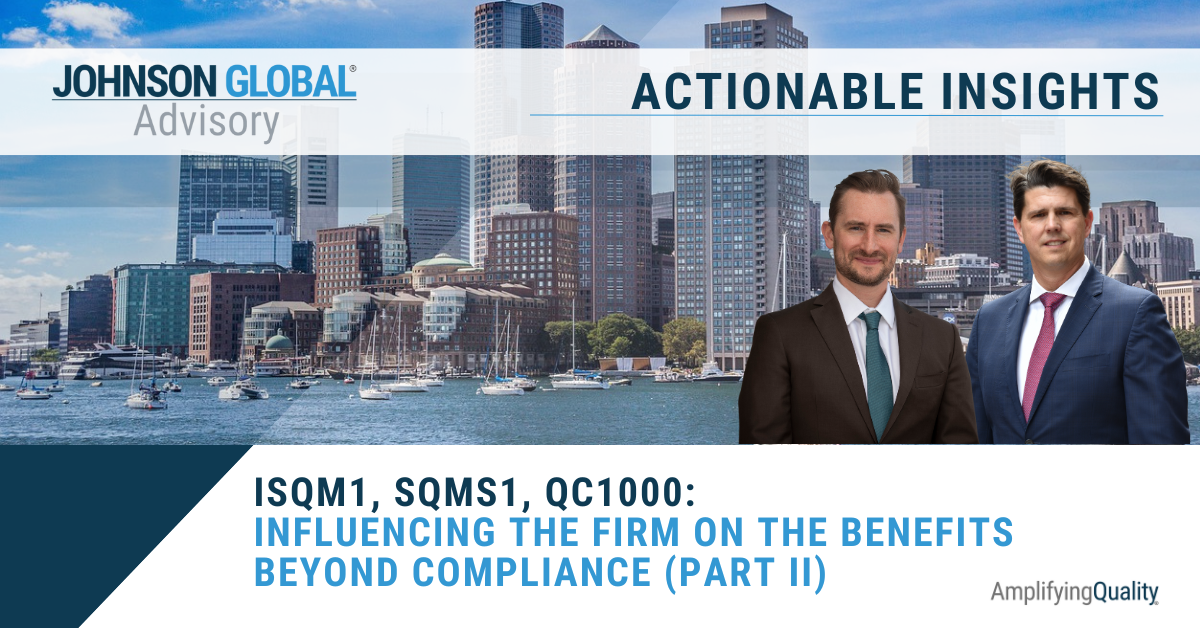
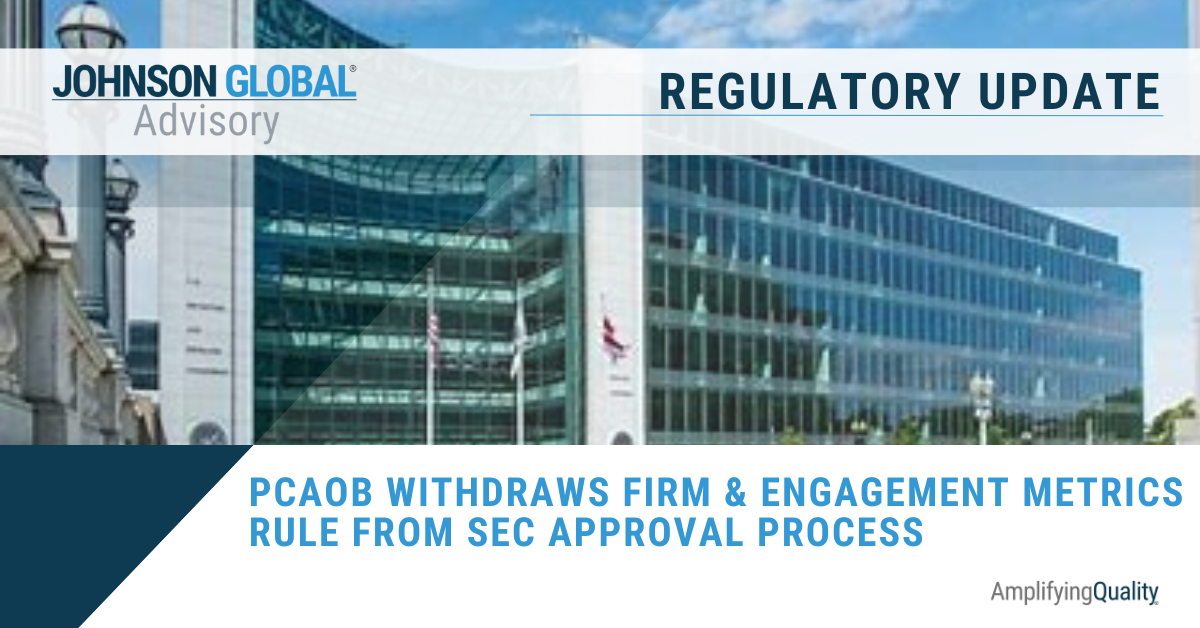
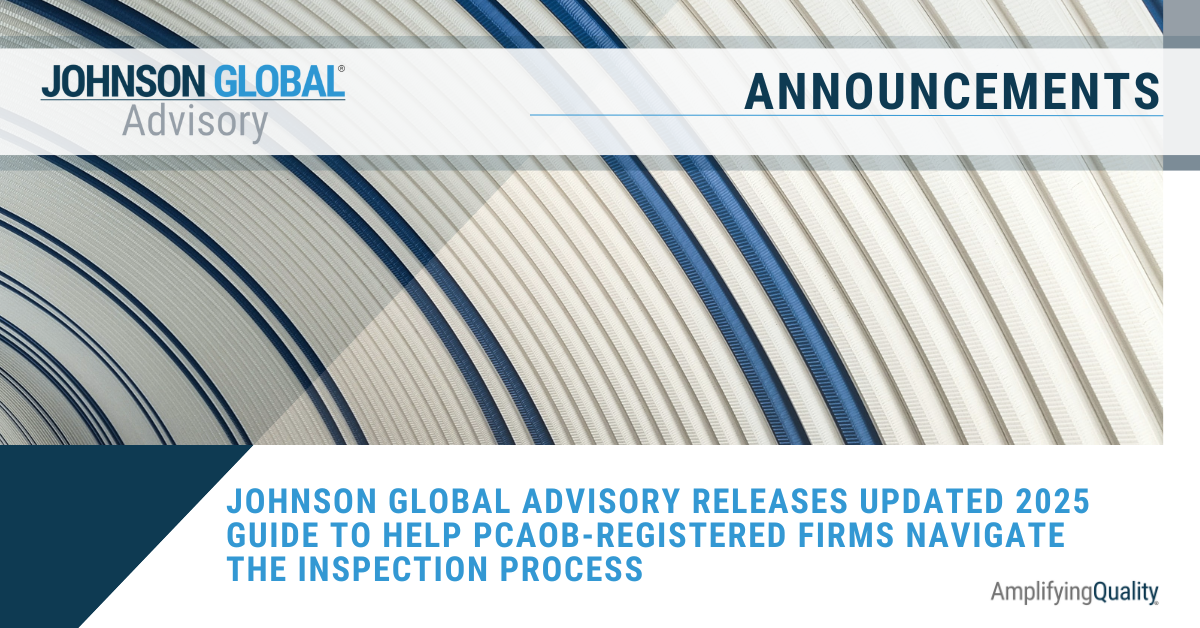

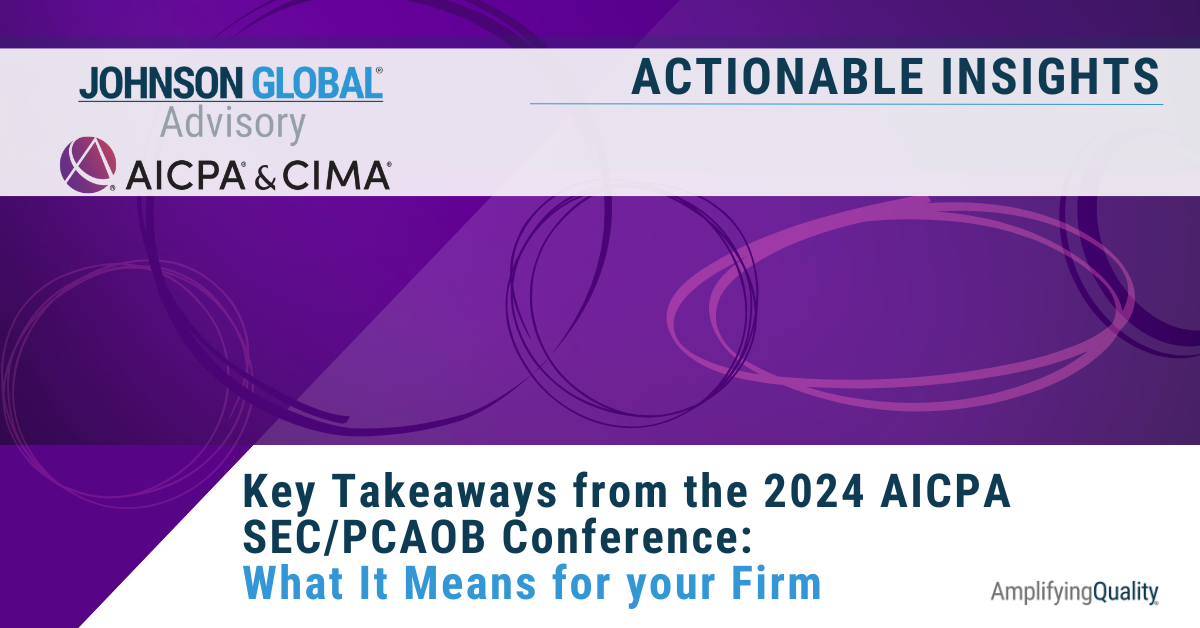
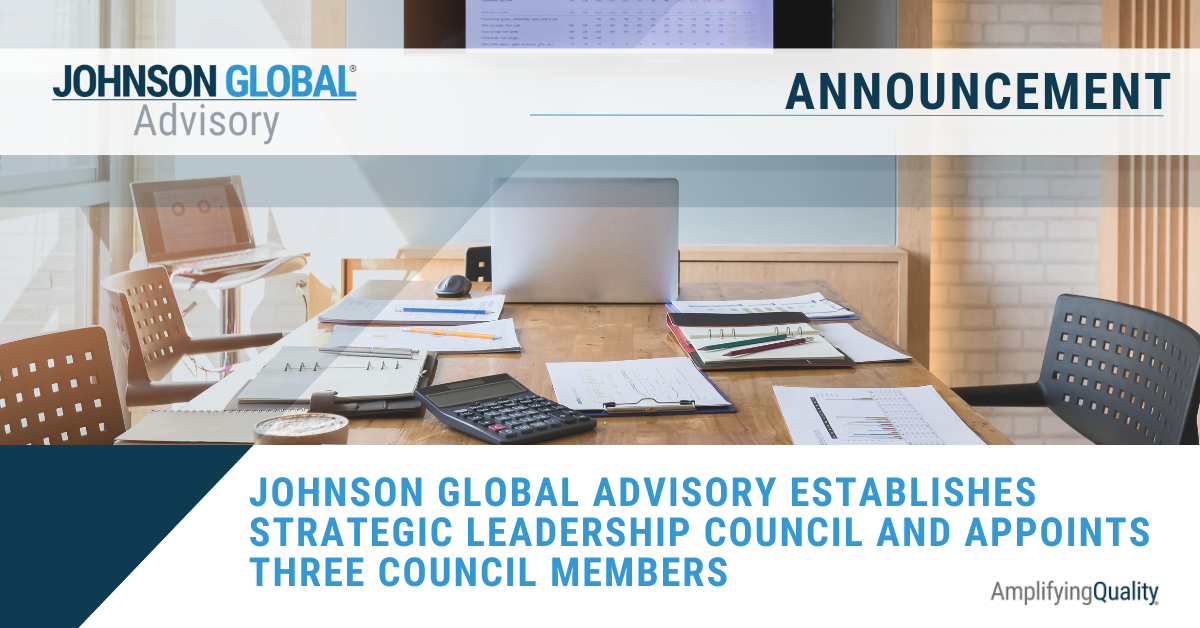

Johnson Global Advisory
1717 K Street NW, Suite 902
Washington, D.C. 20006
USA
+1 (702) 848-7084
